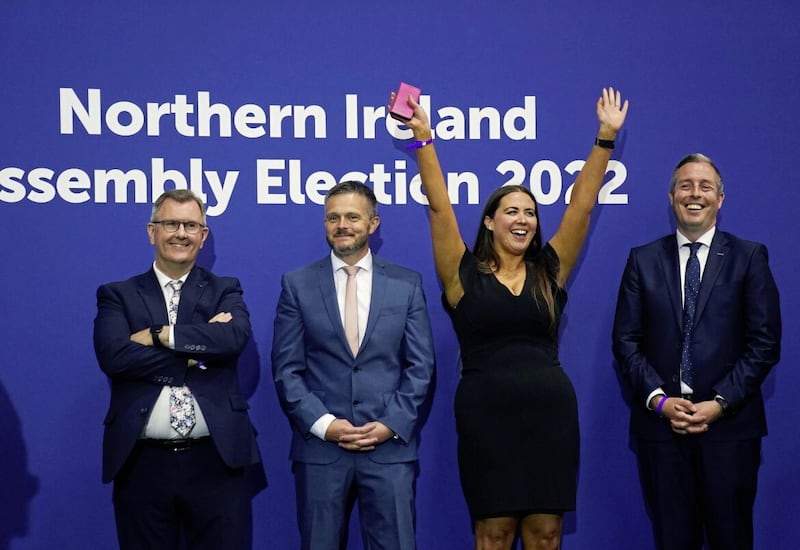Nominations of candidates for the Westminster election close on Friday so we don’t know all the runners and riders yet, but watching the parties jockeying for positions on the starting line is entertaining.
Alliance, the UUP and SDLP say they’ll stand in all 18 seats but Doug Beattie is such a ditherer he may yet pull out of North Belfast, as he did in 2019. Mind you, he’d be better pulling out his comedy colonel candidacy from North Down.
Alliance and the SDLP will stay in, but for different reasons.
Naomi Long’s party is trying to increase its presence across the north, instead of remaining confined to the greater Belfast area and a correlation with the number of golf clubs in a constituency.
It is also anxious to sustain the canard that it has ‘surged’ to become a third element in politics after it came in with just under 17% in the 2019 general election. Since then Alliance has stuck at around 15%, so it will be anxious to maintain or improve on its 2019 figure.
By contrast the UUP and SDLP are both on the way down so they’re standing in all constituencies for the opposite reason to Alliance, namely to try to pretend their decline has stopped.
Both parties stood aside in constituencies in 2019, so running everywhere they’ll hope to increase their percentage share of the overall vote. They won’t.
They are both Potemkin parties (Google it) in terminal decay and decline. They both have trouble filling ever smaller venues for what passes for annual conferences. Both struggle to maintain a façade as one of the ‘big’ parties in the north, a pretence no longer possible for the SDLP after failing to qualify for the Stormont executive.
Both have had a rapid turnover of leaders, with the UUP now in the bizarre position in Stormont of having a leader plus almost as many ex-leaders as MLAs.

This turnover of leaders is because no-one has been able to explain what is the point of either the UUP or SDLP any more. Neither has a narrative, a story to tell, since the glory days a generation ago.
Given their weakened and diminished position, both parties will have trouble fielding 18 credible candidates so some will be paper candidates. In places both have two men and a dog to canvas or distribute leaflets.
The SDLP tiresomely accuses Sinn Féin of sectarian politics for standing aside in places like Lagan Valley and East Belfast. Listen, get real. Politics in the north is sectarian because the place’s origin was designed by a sectarian headcount.
The exchanges in the last week between the DUP and UUP make no bones about it. When they talk about ‘defending the union’, they mean maximising their sectarian vote.

In East Belfast next month, the TUV hopes its intervention in protest against the ‘Donaldson deal’ Gavin Robinson helped negotiate will unseat him.
With the new boundaries Robinson’s projected majority is 2,626. There is every chance the SDLP will cancel out the TUV vote and help elect Robinson over Naomi Long. Thus the result of standing will be the opposite of what it claims it intends.

The SDLP running in Lagan Valley will have a similar outcome. The projected DUP majority there with the new boundaries increases to 7,500, but the nationalist vote also increases slightly. With Sinn Féin (projected vote 1,900) standing aside, and a TUV candidate plus the unpredictable effect of the allegations against Jeffrey Donaldson, a projected 1,800 SDLP votes could block Alliance and save the DUP’s bacon.
The SDLP’s decision to contest all seats is based on electoral weakness to mask its decline
It’s evident that Sinn Féin’s decision to stand aside in four constituencies helps the SDLP in South Belfast. Asking Sinn Féin supporters to vote for ‘progressive candidates’ in Lagan Valley, North Down and East Belfast helps the Alliance Party. It’s a decision based on electoral strength and confidence.
The SDLP’s decision to contest all seats is based on electoral weakness to mask its decline. It’s self-serving and misleading to field token candidates in most constituencies.
At least the UUP might win South Antrim. SDLP supporters’ choice is to buy the party’s ploy and help the TUV or vote Alliance.










